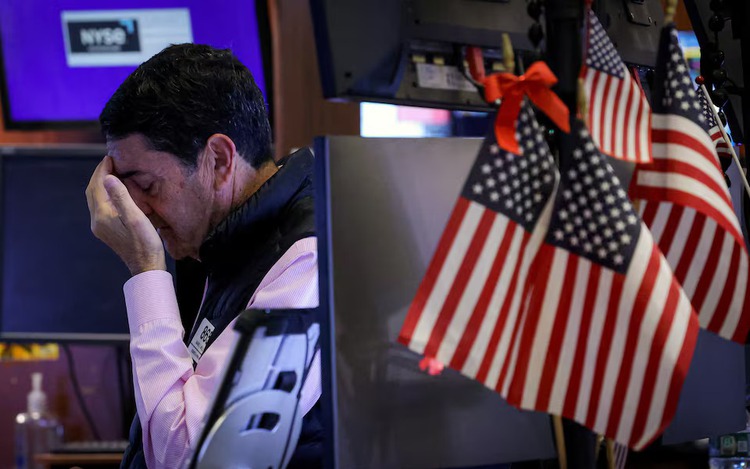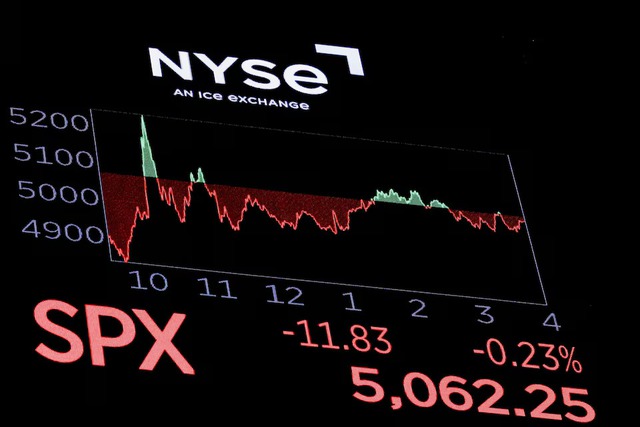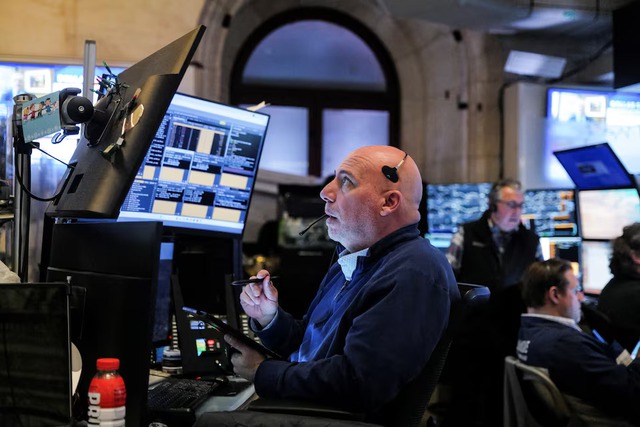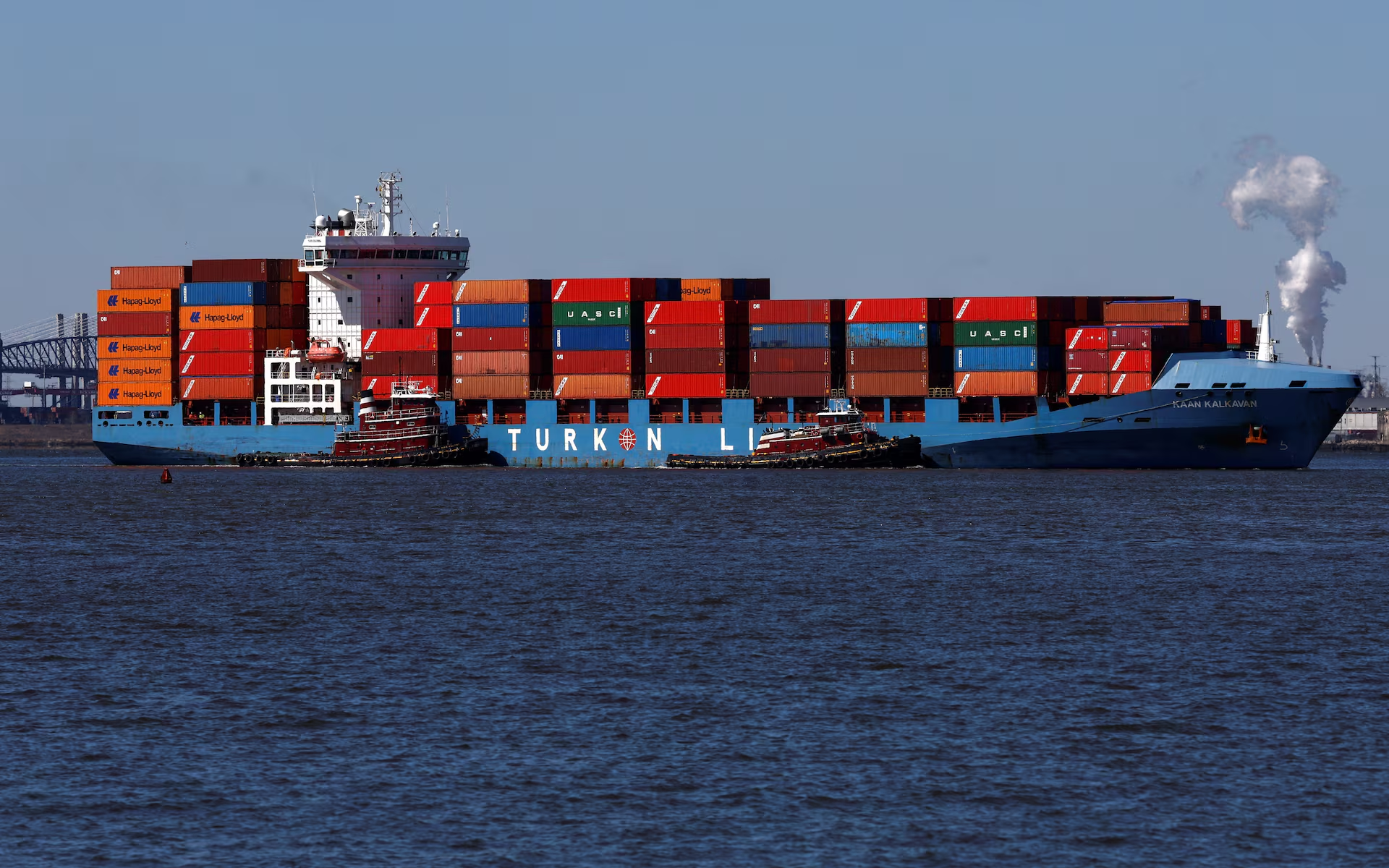
A trader works on the floor at the New York Stock Exchange (NYSE) in New York City, U.S., April 11, 2025. Photo: Reuters
Relief over Trump's move on Wednesday to pull back on some of his heftiest global tariffs proved somewhat short-lived. Investors were unsettled by the escalating trade battle with China, the second-biggest provider of U.S. imports, while the president's 90-day pause on hefty levies elsewhere meant the tariff cloud was not going away anytime soon.
"The worst-case scenario on trade has been avoided but it's not all as fine and dandy as we'd like it to be," said Michael Brown, senior research strategist at Pepperstone. "We've built in 90 days' worth of humongous uncertainty now."
The S&P 500 ended down 3.5 percent on Thursday, after falling more than six percent during the session. A day earlier, the benchmark index soared 9.5 percent, which was its biggest one-day rise since October 2008 during the heart of the financial crisis. It is now down 14.3 percent from its February 19 record high.
While Trump's move on tariffs opens the door to de-escalation, "that's not going to happen overnight," said Angelo Kourkafas, senior investment strategist at Edward Jones.

A screen shows trading of the S&P 500 Index after the closing bell on the floor at the New York Stock Exchange (NYSE) in New York City, U.S., April 7, 2025. Photo: Reuters
Volatility spiked higher again on Thursday, with the Cboe Volatility index rising to as much as nearly 55 points, more than three times its median long-term level. The index, known as Wall Street's "fear gauge", in the past week has delivered some of its most elevated readings since the start of the COVID-19 crisis five years ago.
The stock market has seen enormous swings since Trump announced his sweeping tariffs on April 2. On Wednesday, the S&P 500's 10.7-percent intraday range marked the fifth-largest one-day swing in at least the last fifty years. That stunning market rebound came after the index had been on the brink of confirming a bear market, sliding nearly 20 percent from its February high.
Investors who may have regretted not selling earlier in the market's decline could have been taking advantage of Wednesday's huge gains to unload holdings on Thursday, said Sameer Samana, head of global equities and real assets at the Wells Fargo Investment Institute.
The selloff "shows you how many people are thinking, we're just not sure what is going to happen next, so we're going to just take the money and run," Samana said.

A trader works during the closing bell, on the floor at the New York Stock Exchange (NYSE) in New York City, U.S., April 10, 2025. Photo: Reuters
Economy worries remain
Even as Trump eased back on the harshest trade measures for now, investors still worried about the fallout for the economy.
"The drag from trade policy is likely to be somewhat less than before... (but) we still think a contraction in real activity later this year is more likely than not," JPMorgan analysts said.
Despite the 90-day pause, the fact there is a baseline 10-percent tariff and other tariffs such as those on autos remain in place is not a good scenario, said Adam Hetts, global head of multi-asset at Janus Henderson.
"Recession risk is much, much higher now than it was a couple weeks ago," Hetts said. He is advising investors to cut stock holdings and buy more investment-grade sovereign bonds as tariffs threaten to slow global growth.
As companies start reporting quarterly results in the coming days, investors are bracing for executives to offer little clarity about their outlooks because of the uncertain trade environment.
In light of the sweeping tariffs, any details from companies about their supply chains and investment plans will be valuable, said Marta Norton, chief investment strategist at retirement and wealth services provider Empower. Any earnings disappointments posed a risk for stocks, Norton said, especially in light of the new trade regime corporations now face.
"There's room for downside surprise," Norton said.



Max: 1500 characters
There are no comments yet. Be the first to comment.